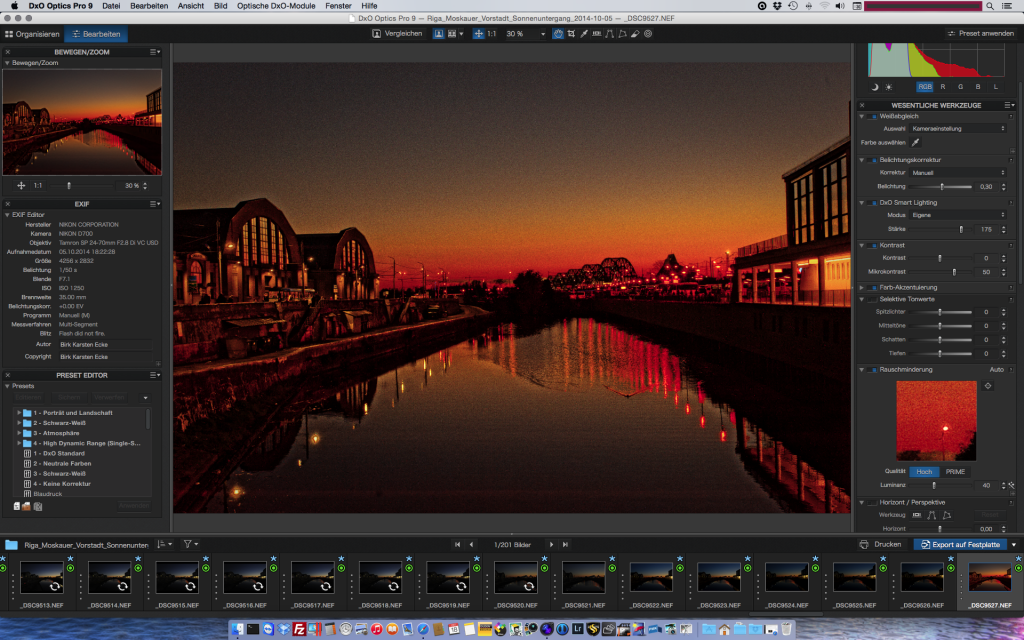
- #Dxo photolab elite vs. capture one 12 upgrade
- #Dxo photolab elite vs. capture one 12 pro
- #Dxo photolab elite vs. capture one 12 software
One key restriction still remains, however: Capture One’s parametric masking scheme only permits one control point set per layer. So if you make extensive use of local edits the new tools can significantly reduce catalogue size. A brief test applying a radial mask to with a 20MP RAW file showed that the vector based version requires only a few hundred bytes of storage, while the rasterised version required a whopping 1.2MB.
#Dxo photolab elite vs. capture one 12 pro
The new parametric linear mask tool in Capture One Pro 12.Īnother bonus for the new mask tools is the reduction in catalogue file size. These work similarly to the tools in Adobe Lightroom, allowing the mask to be quickly and easily edited to change position, rotation and the gradient. While extremely flexible, generating and editing masks precisely could be very time consuming and difficult.Ĭapture One 12 builds on previous versions with new linear and radial gradient mask tools that work parametrically rather than by painting a bitmap. New Linear and Radial Gradient Mask ToolsĬapture One uses a powerful local editing system based on layers, each of which has its own layer mask to control application of the edits. But the downside to this is that any local edit needs a layer mask that must be painted by hand. It is a minor change and not something you are likely to use often, but the cleaner and more searchable interface is nonetheless welcome. Lastly, Phase One like to enthusiastically point out that the UI to customise keyboard shortcuts has been improved, in line with the new menu system. But overall I prefer the older, darker style with its more visually distinctive icons (which, for example, more clearly differentiate the lens-correction and search tools). They were likely motivated by a desire to improve usability with large, high DPI displays. The graphic design for the tool panels has also been changed, using thicker outlines on icons and larger, bolder text, while the main window background is now a lighter shade of grey. Overall, I am fairly neutral about the changes to the visual design. This is particularly true for local adjustment layers, which finally have a top-level menu all to themselves. This hugely improves feature discoverability for both new users and those existing users (including me!) who occasionally struggle to find rarely used commands. The new menus are more cleanly organised around functionality, with top-level naming that follows industry conventions.
#Dxo photolab elite vs. capture one 12 software
Previous versions of the software had a menu structure that was, to put it politely, baroque. The most significant change is the reorganisation of the main menu bar. The updated user interface in Capture One 12.

You can see the difference in the following images, showing 11 (first) and CO12 (second): With Capture One 12, Phase One have done a good job in updating the user interface to make it both more accessible while still keeping it familiar enough that experienced users will still feel at home.

The approach to image editing and cataloguing is not very different – ultimately all DAM and RAW converters require much the same tasks – but Capture One’s user-interface and terminology can be a formidable barrier. Photographers coming to Capture One from other software face a steep learning curve. For a more general overview of Capture One, please see this earlier review of the software.

Here, I will only look at the changes over the previous release of the software, using a set of colour film images that were scanned using a mirrorless camera and macro lens. editable vector based layer masks for local edits.user interface design changes to improve usability with large or high-DPI displays.user interface updates to make the software more accessible, particularly for new users.
But is it worth the accompanying eye watering price rises? The main new features include:
#Dxo photolab elite vs. capture one 12 upgrade
Version 12 introduces some new features which, unlike last years update, should make this an upgrade that is much easier to recommend for most users. This is a short review of Capture One Pro 12, Phase One’s alternative to Adobe’s Lightroom CC package.


 0 kommentar(er)
0 kommentar(er)
